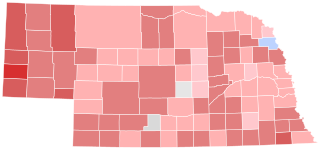
The 1958 United States Senate elections were elections for the United States Senate which occurred in the middle of President Dwight D. Eisenhower's second term. Thirty-two seats of Class 1 were contested in regular elections, the new state of Alaska held its first Senate elections for its Class 2 and 3 seats, and two special elections were held to fill vacancies.

The 1950 United States Senate elections occurred in the middle of Harry S. Truman's second term as president. The 32 seats of Class 3 were contested in regular elections, and four special elections were held to fill vacancies. As with most 20th-century second-term midterms, the party not holding the presidency made significant gains. The Republican opposition made a net gain of five seats, taking advantage of the Democratic administration's declining popularity during the Cold War and the aftermath of the Recession of 1949. The Democrats held a narrow 49-to-47-seat majority after the election. This was the first time since 1932 that the Senate majority leader lost his seat, and the only instance of the majority leader losing his seat while his party retained the majority.

Albert Wahl Hawkes was a United States senator from New Jersey.

The United States Senate election of 1946 in New Jersey was held on November 5, 1946.

The United States Senate election of 1940 in New Jersey was held on November 5, 1940.

The 1942 United States Senate election in Nebraska was held on November 3, 1942.

The United States Senate special election of 1938 in New Jersey was held on November 8, 1938.

The 1944 United States Senate special election in New Jersey was held on November 7, 1944.

The United States Senate election of 1948 in New Jersey was held on November 2, 1948.

The 1956 United States Senate election in Florida was held on November 6, 1956. Incumbent Democratic U.S. Senator George Smathers won re-election to a second term.

The United States Senate election of 1916 in New Jersey was held on November 7, 1916.

The 1918 United States Senate elections in New Jersey were held on November 7, 1918.

The United States Senate election of 1922 in New Jersey was held on November 7, 1922.

The 1924 United States Senate election in New Jersey was held on November 4, 1924. Incumbent Republican Senator Walter Evans Edge was re-elected to a second term in office. He would not complete the term, resigning from office in 1929 to be sworn in as the U.S. Ambassador to France.

The 1926 United States Senate election in Indiana took place on November 2, 1926. Incumbent Republican Senator James E. Watson was re-elected to a second full term in office over Democratic attorney Albert Stump.

The United States Senate election of 1928 in New Jersey was held on November 6, 1928. Incumbent Democratic Senator Edward I. Edwards ran for re-election to a second term in office, but was defeated by Hamilton Fish Kean in a landslide. This was the third of four straight elections to this seat in which the incumbents were defeated.

The United States Senate election of 1934 in New Jersey was held on November 6, 1934.

The United States Senate elections of 1936 in New Jersey was held on November 3, 1936.

The United States Senate election of 1952 in New Jersey was held on November 4, 1952.

The 2022 elections for the Florida State Senate took place on Tuesday, November 8, 2022, to elect state senators from all 40 districts. Although on ordinary years, 20 senators are elected at a time on a staggered basis, races following redistricting elect all 40 members to ensure that each member represents an equal number of constituents. The Republican Party expanded their Senate majority from 24 to 28, gaining a supermajority in the Senate. The concurrently held House elections also resulted in a supermajority, giving Republicans supermajority control of the legislature.













